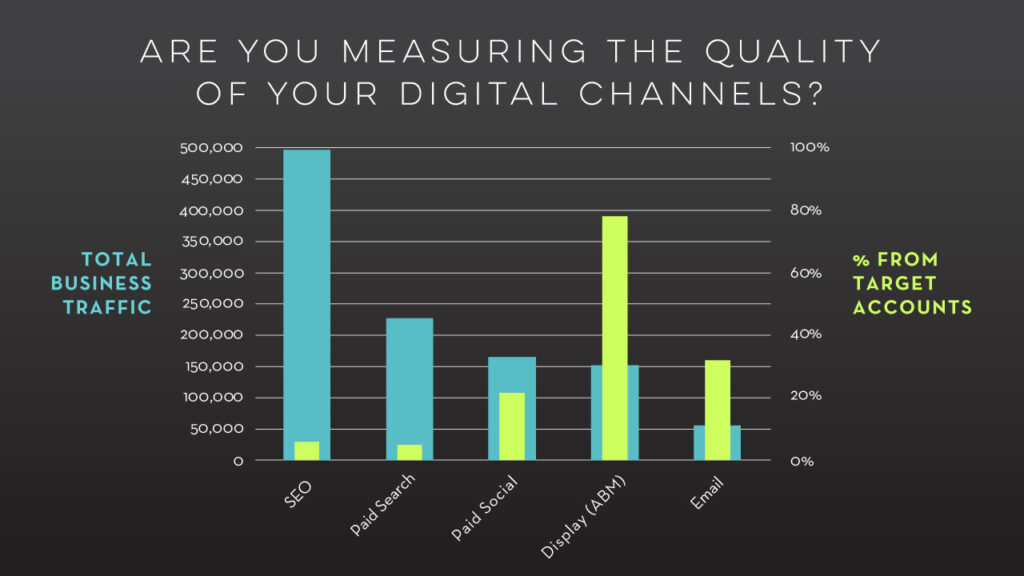10 years of ABM tech adoption has exposed the next large opportunity for B2B Marketing
Chris Golec
It’s time to look beyond ABM. The time has come to understand which vendors predictably impact desired business outcomes like influencing pipeline and closing deals.
Beyond Account-Based Marketing
Way back in 2006 — yes 16 years ago — I had a business plan to build a marketing platform for B2B marketers that allowed them to measure all their vendors and channels in one place so they could have tight control of the volume, quality, dollar efficiency, and pipeline impact of every dollar invested. I even had cool “what-if” tools to project the pipeline impacts of budget changes. So, what happened? Well, it was just a demo, venture firms were not super excited about Martech at the time, and the critical step of measuring quality (aka target accounts) had to happen first. That new focus on target accounts led to the birth of account-based marketing (ABM).
Today, ABM continues to grow quickly, with clear contributions to pipeline and selling efficiency across a variety of industries in multiple geographies. With the ABM wave, a deep bench of technology and service providers has emerged and tens of thousands of marketers now work on dedicated ABM teams, attend events, and even get ABM-certified. While some slower-to-adopt industries are just getting started, it is safe to say ABM is here to stay for the long term.
Now the B2B marketing sector is (finally) reaching a place where measuring dollar efficiency, in collaboration with finance, will become essential in understanding the performance of vendors and channels. To be effective, companies will need to shift to opportunity-centric models and measure marketing based on pipeline and pipeline acquisition cost (see my previous article), and software or technology that can help ensure and predict pipeline supply will become a “must-have”. If you’re in finance, you’re probably saying “Hell yes” right now and if you’re in marketing, you are probably saying, “Well, it’s complicated”. These conflicting responses represent the common disconnect between finance and marketing when forecasting and planning.
Understanding Marketing Efficiency
To start simple, I suggest measuring what it costs to engage an account from your total addressable market (TAM). You might be surprised to hear that it is common to have only 15-20% of the visitors to a B2B website from the company’s TAM. Does that mean that 80+% of the dollars dedicated to programs with the goal of generating digital engagement are inefficient? Not exactly.
So much of the web —even in B2B — is BOT and non-human traffic that 40%+ of the visits might be from crawlers and other random unpaid sources. So maybe, just maybe, only 20% of the 60% of real businesses is from your TAM, or 33% efficient. That’s not to say that all non-TAM traffic must be eliminated (that would be nice though, wouldn’t it?) Rather, the goal is to decrease money spent on vendors and channels that don’t generate enough TAM traffic to justify their cost.

But how do you know which vendors or channels are driving the traffic from your TAM? And how can you track the amount spent on those efforts? The measurement of cost per quality visit (aka a TAM visit) is incredibly eye-opening, but few companies actually measure it effectively. Of course, this is a stepping-stone to going beyond dollar efficiency and understanding which vendors predictably impact desired business outcomes like influencing pipeline and closing deals.
Where do we go from here?
It’s time to look beyond ABM. The focus on quality accounts will deliver measurable benefits ranging from pipeline generated, sales cycle reduction, and increased close rates — a shift I’m confident the sales team will embrace as well. B2B marketers need to place greater focus on becoming more dollar efficient by measuring channels and vendors based on quality visits and the amount of pipeline influenced per dollar invested. And because B2B deals typically involve dozens of decision-makers, both anonymous and first-party touchpoints must be considered. Could this be the next big technology category in B2B?
